The American Lineman: The Evolution of The Lineman’s Pole Climber
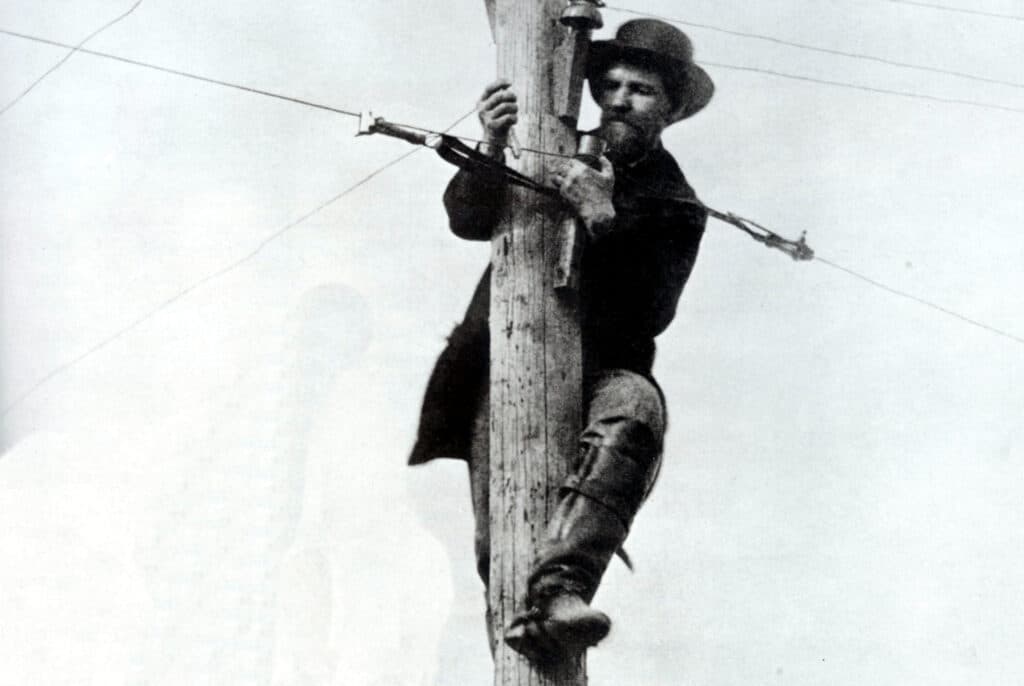
The birth of the Linemen dates to the beginning of the telegraph in the 1840s when the first lines were installed on short wood poles. In this period of infancy, linemen would typically ascend wood poles by shining them or by using rope or wooden ladders. The use of a piece of steel with some sort of sharp point attached was soon developed and would go on to be referred to as a climber, hooks, leg irons, gaffs, etc. This article is intended to present the evolution of the climbers including significant improvements along the way.
THE BEGINNING 1860s-1880s
Information about the first pole climbers is limited and is best understood by looking at old pictures or examples of the early climbers. There is a connection with the logging industry for the development of pole climbers as several homemade climbers can be seen in logging pictures. From all indications, it appears that logger tree climbers predated pole climbers by several years. There is some indication that during the revolutionary war tree climbers were used by soldiers to climb trees to observe the enemy.
In these early days, the majority of the work was construction and linemen did not have to stay on poles for lengthy periods. In many cases, they were installing and securing conductors to insulators which did not take long. With the evolution of power lines and more communications circuits, the work of maintaining lines became a reality and in many cases linemen were required to work on poles for a longer time.
Old photographs indicate the first use of pole climbers with leg irons and gaffs seems to be around the 1860s. From all indications, the very first climbers were individual made by the lineman or the telegraph companies using a local blacksmith. A few of the telegraph supply companies also manufactured some lineman tools including pole climbers. The major companies that manufactured pole climbers were L.G. Tillotson Telegraph, Western Electric and Western Union.
Climbers were attached to leg without pads by anything that worked such as leather straps, wires and leather thongs. The angle of the gaff in many cases was much greater than the modern angle of 16 degrees and it is hard to imagine how linemen could have climbed with them.
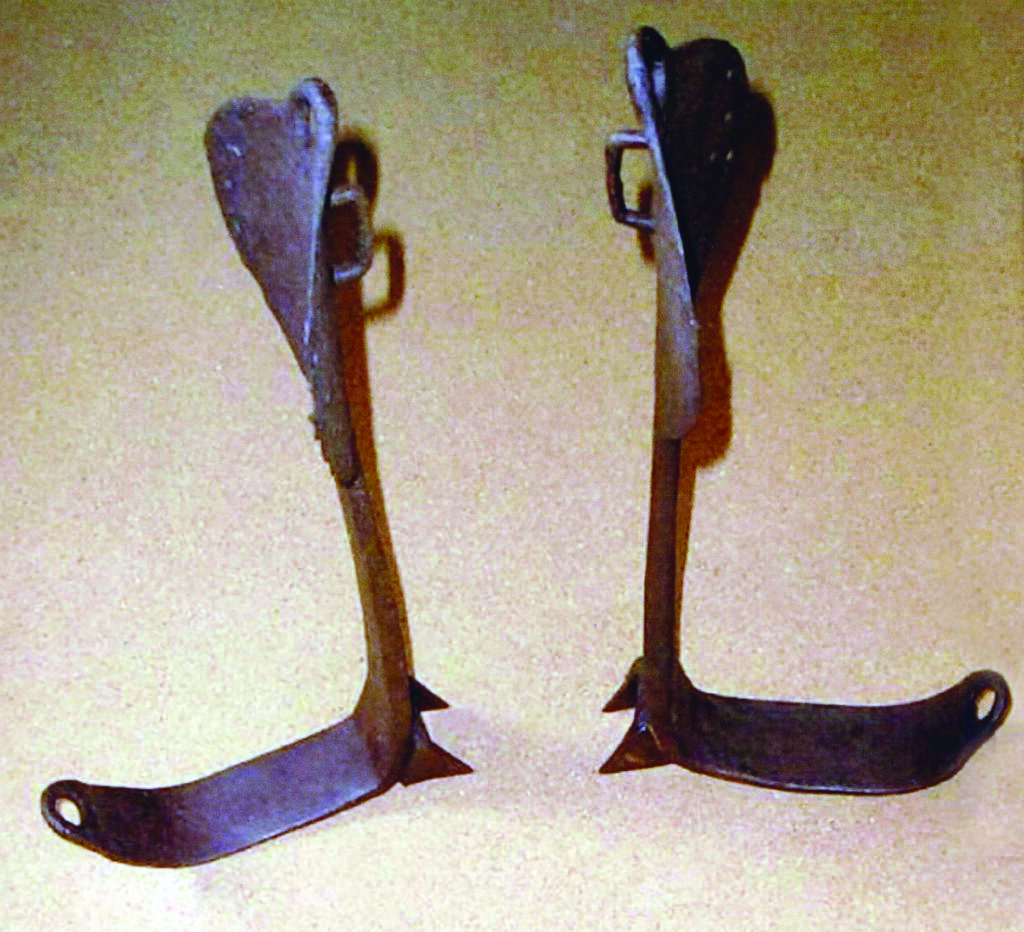
MANUFACTURING BEGINS 1880s-1920s
During this period, the introduction of the telephone and power systems greatly expanded the need for linemen and linemen tools. To some degree pole climbers were still manufactured by a local blacksmith using a homemade design from some previously made climber.
Mathias Klein started the Klein Tool Company in 1857 with the development of the Lineman Pliers. Klein would go on to expand its lineman tool line to include pole climbers, which they introduced in the late 1800s. In 1896, Wilmont Stephens founded the Stephens Company in Binghamton, New York and started handcrafting linemen’s climbers. They would go on to become the Buckingham Tool Company around in 1913.
Caspar Henry Dicke founded the Dicke Tool Company in Downers Grove Illinois in 1886. Dicke would go on to manufacture various lineman tools including pole climbers. Some of the pole climber manufactures were Oshkosh, the Cincinnati Tool Company, Cronk & Carrier, Hargrave, D.A. Jones, and Smith & Hemenway. The use of climber pads started to become popular and a variety of homemade pads were used. Some of the manufacturers stamped their name on the leg iron and some would also stamp the length of the climber.
Climbers were frequently designated as “Eastern Style” or “Western Style.” The “Western Style” had the gaff on the opposite side from the leg iron and the “Eastern Style” had the gaff on the same side as the leg iron. The “Eastern Style” soon became the most popular and the “Western Style” became obsolete.
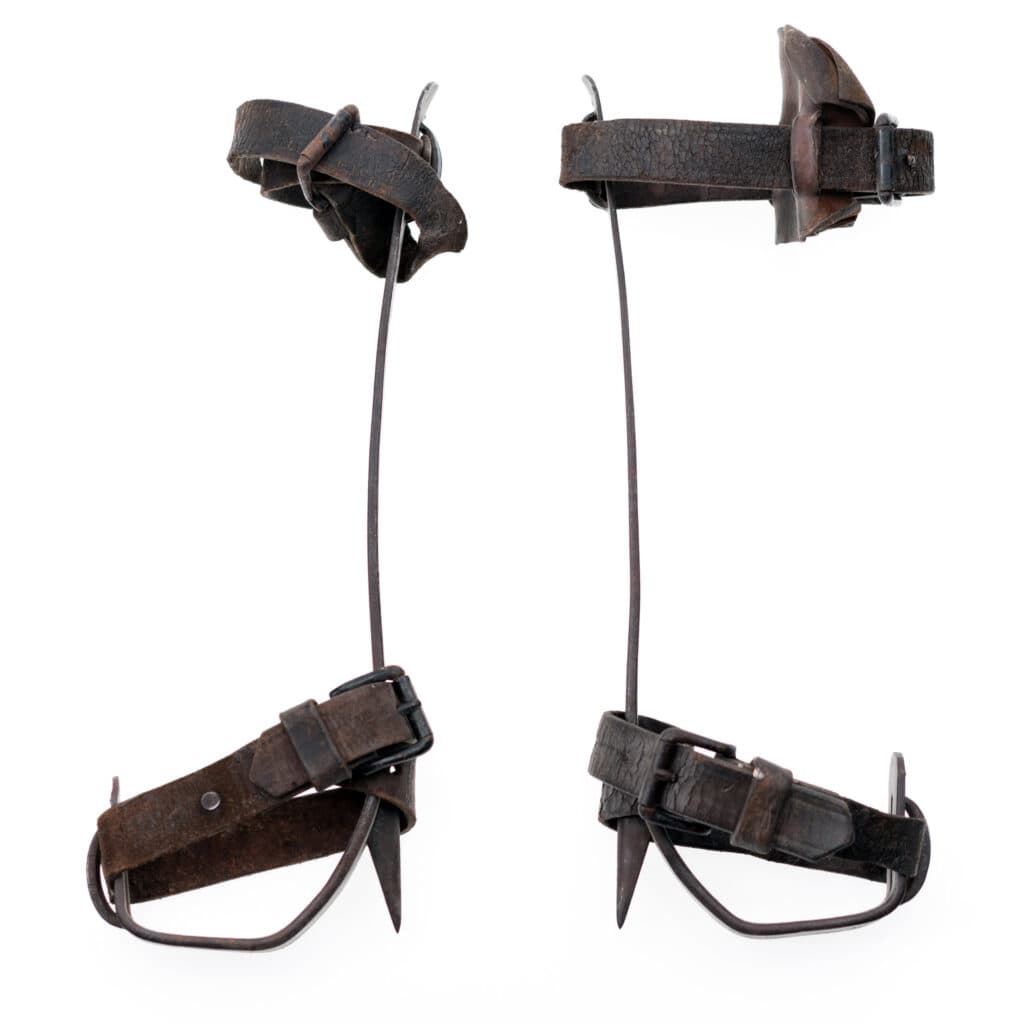
STANDARDIZATION 1920s-1970s
The use of the local homemade blacksmith climbers faded away as several manufacturers started designing and manufacturing pole climbers that made pole climbing easier and safer. Manufacturers of climbing tools obtained input from linemen and gradually improved the quality of their tools. Most manufacturers provided climbers in different lengths to better fit the lineman. The fixed gaff stayed standard for many years and some companies offered a regaffing service for climbers whose gaffs became too short. The offset climber, which brought the gaff in alignment with the lineman’s center of gravity kept the climber from twisting and sliding back on lineman’s leg was introduced in the early 1940s. The majority of the climber pads were a smaller square type attached with leather straps.
Bashlin Industries was founded around 1930 and would go on to be a major manufacture of pole climbers. Two of the major enhancements to the climber was the introduction of the adjustable climber and the replaceable gaff. The L-shaped pad was also introduced which significantly improved the comfort for linemen. Several companies such as MSA, Brooks, Miller, Buckingham, Klein and Bashlin all manufactured pole climbers.
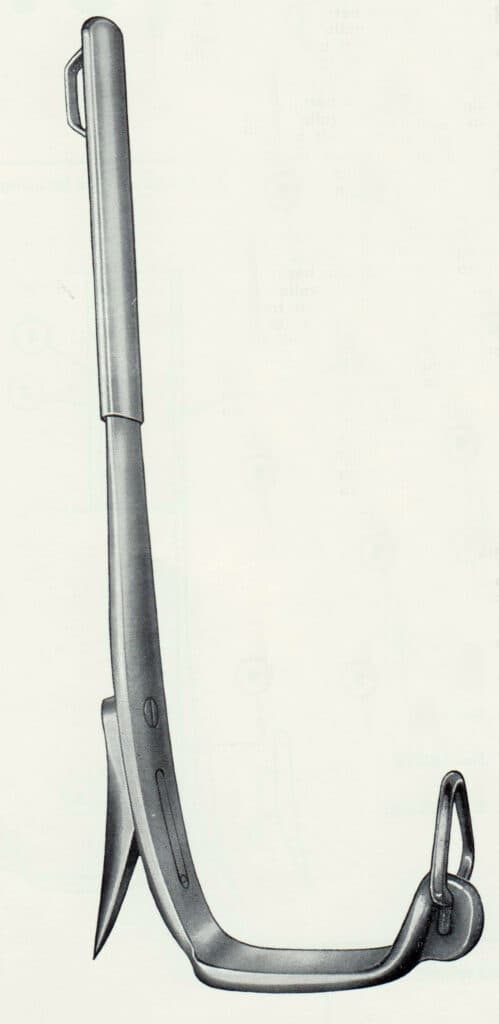
MODERN ERA 1970s-2017
Moving into this era Buckingham, Klein and Bashlin would emerge as the major manufactures of high quality pole climbers. They would make climbers stronger and lighter using a variety of high-performance metals such as titanium, aluminum alloy and steel alloy. Additional enhancements such as offset shanks, twisted shanks, contoured shanks, and rounded foot stirrups improved the comfort and ease of climbing for the linemen. Specially designed gaffs to combat the hardness of Chromated Copper Arsenate (CCA) and other types of treated poles were introduced and became popular with many linemen.
Buckingham Manufacturing made several enhancements to their climbers, including
the addition of a three-degree angle to the gaff position allowing the tip to always be aligned with the center of the pole. This change has been well received by linemen and has reduced gaff-outs. Buckingham offers a very nice high visibility, strong magnetic gaff guard. They also make a climber foot plate that is makes long stays on a pole more comfortable. They now color code their climbers to identify the different metals used.
A variety of enhanced climber pads and straps have been developed with the most popular using the Velcro method for attachment. Buckingham now has a Velcro foot strap that is very easy to use. NLC offers the Buckingham BUCKALLOY climber to our Electrical Lineworker Program Students.
Climbers were now made stronger and lighter using a variety of high-performance metals such as titanium, aluminum alloy and steel alloy.
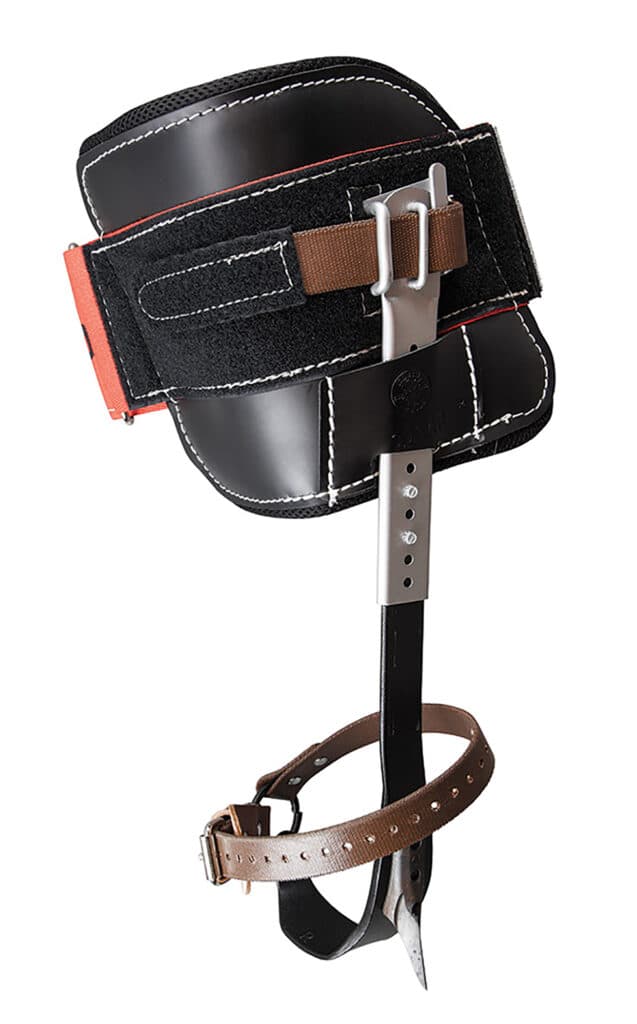
CONCLUSION
Like everything else we have come a long way with improvements in pole climbers. It is noteworthy that the concept of using a metal leg iron a gaff attached to the leg of the lineman remains the fundamental method of climbing wood poles today as it was in the late 1800s. While the evolution of the aerial lift truck has reduced the need for pole climbing, linemen continue to climb poles on a frequent basis. Pole falls have certainly been mitigated as free-climbing has faded away since the new fall restriction equipment has become the standard. Linemen still show passion for and take pride in “hitting the wood.” The majority of today’s linemen still own and care for their “Hooks.”
Alan Drew is renowned in the industry for his leadership, knowledge and the ability to plan. His book, The American Lineman, is a testament to those attributes.
Elevate Your Workforce

Pre-Apprentice Program
Learn more about our 15-Week Electrical Lineworker Program.

Power Delivery Programs
Distance-learning apprentice training curriculum. Enroll your company's apprentices today

Lineman Apprenticeship Program
Instructor-led training and certification apprenticeship program to build your company’s apprenticeship.